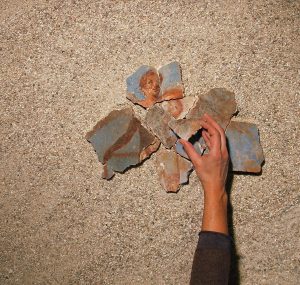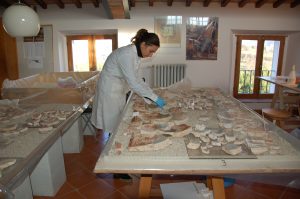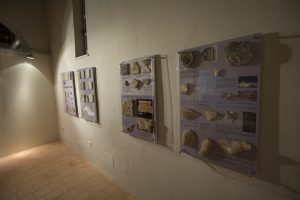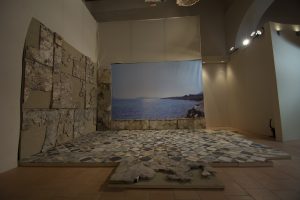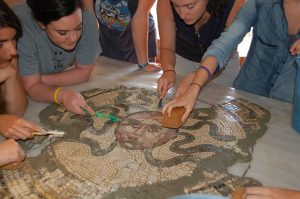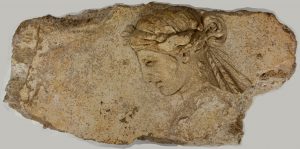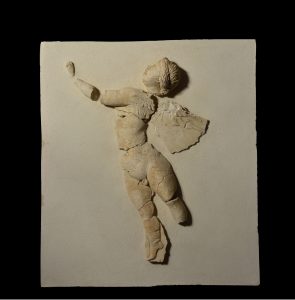Marble Wall Veneer
The stone materials recovered in the course of excavation campaigns were in a fragmentary state and occupied 62 crates.
The retrieval of such an important and abundant group of finds led to a long research and study process aimed at the conservation, reconstruction and museum display of the wall decoration from the Sant’Imbenia Villa.
Conservation, reconstruction and categorization treatments have been developed in a progressive order, which generally follows a chronological order. These treatments were: cleaning, search for joins, assemblage, new support, museum display. After a careful analysis of the materials’ conditions and of the alterations visible on the surfaces we proceeded with the first treatment stage: cleaning, which allowed a better reading of the fragments’ colors and morphology. The various marbles recovered constitute an exhaustive collection of the types employed in Roman times. The list includes white marbles, both fine and coarse grained, giallo antico and verde antico, alabaster, greco scritto, pavonazzetto, africano, breccia corallina, serpentino, semesanto and fior di pesco.
This information was of fundamental importance in the next restoration phase: the search for joins, which was particularly challenging and lengthy, and required much research. This complex operation was preceded by an analysis of marble processing and construction techniques.
Assemblage of all the fragments could only be carried out once the search for joins was complete. Finally, twenty two wall cladding slabs were recomposed.
Aerolam panels were chosen as supports, as they are very light and solid. Panels were not attached to the slabs. Hooks were inserted in the panels with the aim to support the slabs and block them along the perimeters.
The arrangement of the 22 reconstructed slabs in the museum was based on information gathered during treatment. The display should not be viewed as a reproduction of the original walls, nor was that our intention. As a hypothetical reconstruction, it was designed to be easily reversible, while providing a testimony of the Villa’s internal decoration, together with the opus sectile and the frescoes: a flexible composition, open to new interpretations.













